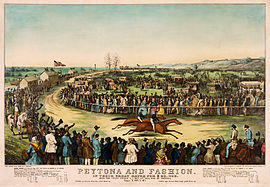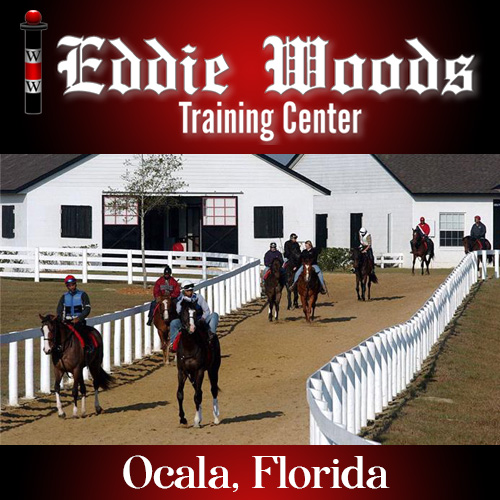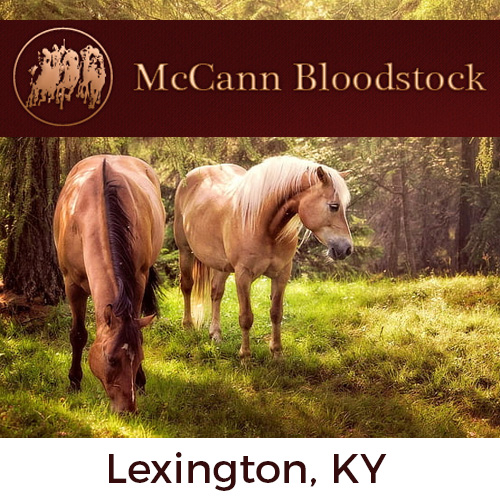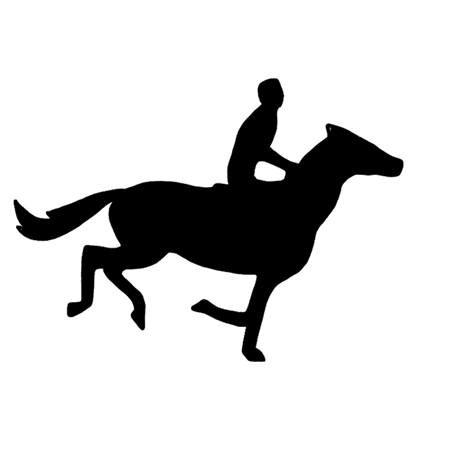Thoroughbred People's Equine Legends Series: Fashion
On the authority of Spirit of Times, Fashion, one of America’s first great race mares and a member of the National Museum of Racing and Hall of Fame “is a rich, satin-coated chestnut, with a star, and a ring of white above the coronet of her left hind foot: on her right quarter she is marked with three dark spots, like Plenipo, and other “terribly high-bred cattle.” While the beginning of the unknown author’s description sounds less than flattering he or she states, “her great excellence consists in the muscular developments of her quarters, thighs and gaskins. As in the greyhound and the hare, the seat of the propelling power in the horse, which enables him to move with a great degree of velocity, is centered in his hindquarters: necessarily in proportion to their strengths there, will be the impulse which impels the whole mass forward.”
Whether the disposition towards or opinion of Fashion in regards to this particular writer is positive or negative, it cannot be disputed the daughter of Trustless and Bonnets O’ Blue was a superb performer. In fact, she defeated the mighty Boston twice, her career spanned eight years and there were only four occasions she did not finish first. In addition, her four mile standard of 7:32 ½ existed for thirteen years. Unsightly spots on a horse’s quarters do not detract from their capability to perform.
Born on April 26th 1837, at William Gibbons’ establishment in Madison, New Jersey, Fashion was descended from some of the most elite horseflesh in the country. Her sire was imported from England, where he finished third in the 1832 Derby, by steamboat and railway magnate Robert Stockton. Until he passed at the age of 27, Trustree never was assigned a high stud fee or attracted a bevy of mares but he sired Revenue and Levy. Revenue went on to become a top racehorse and leading sire himself in 1860, while Levity’s line was responsible for such horses as Luke Blackburn, Salvator, The Bard and Tammany.
When it comes to female tail lines Bonnets O’ Blue was one of the finest broodmare prospects in the United States during her time. Sired by Sir Archy’s excellent son Sir Charles and foaled by Reality, who defeated her mate as well as Timoleon during her career, she was referred to as “one of the greatest racehorses ever seen.” Therefore, Bonnets O’Blue possessed all the right genetic material to dominate as a racehorse and she did not disappoint. She won five of seven starts at age six and hit the wire before Goliah, Black Maria and St. George.
Gibbons purchased her in the fall of 1836 for $2,500 with Mariner, a colt by Shark, at her side and Fashion in utero. Mariner also was a very talented racehorse, but none of Bonnet O’ Blues remaining seven foals ever achieved the stature of her first two. Indeed three of her progeny had the misfortune of perishing before reaching adulthood.
Fashion’s Early Career
As Gibbons, who refused to wager on any of his racehorses, a rarity at that time, was concerned about the complications encountered when breaking Mariner, Fashion was not placed into training until she was three. She was placed under the care of Samuel Laird, a former jockey and new employee for Gibbons. He was told to never rush her or push her along. Gibbons must have been pleased with how Laird reacted to his instructions as he remained her trainer every time she competed and his son Joe was her regular pilot.
Fashion debuted in the fall of her three-year-old season with triumphs in two-mile events at Camden and Trenton in the Garden State. She commenced her four-year-old campaign at Union Course on Long Island in a three mile heat by defeating four contestants. Her second start was a four mile heat race, but the mare was not at her best due to a cough and finished third. Given ample time to recover her health, Fashion returned to the track that fall at Union Course in a two-mile heat in the mud where she won with ease. Her next performance was in a three mile heat race in Baltimore that was also over a rain soaked course, where she bested John Blount.
In October, she took on the venerable Boston and John Blount at Camden, New Jersey, in her first four mile set of heats. She reigned victorious as John Blount broke down and she was much the best over a tired Boston. He had stood stud that winter and spring, was now eight and laid it all out when winning his last race, which was against Fashion’s older half sibling Mariner.
The Great North South Match Race
With the nation literally in stunned disbelief that Boston had lost and his owners, James Long and Colonel William Johnson, not classy in defeat, a gauntlet was laid down to “the Friends of the distinguished Race Nag, Fashion) to meet Boston yet again in a $20,000 match race. The race was to be held at Union Course during the spring and would consist of four mile heats. Ironically, Long and Johnson were the individuals who sold Gibbons Bonnets O’ Blue, so how could they ever refer to her as a nag?
Gibbons was not at all inclined to run any of his horses in match races. It simply was not how he conducted his stable, but he grudgingly gave way on November 20, 1841, 24 hours before the challenge expired. His proxy for acceptance of the meeting was issued through his friend Henry Toler, the New York Jockey Club Secretary. The date for the event would be May 10 and the nation worked itself up into a fervor prior to the time the horses took to the course.
Billed as a contest between North and South, people were making such outrageous wagers on which horse would win based on their regional biases, many men bet their whole farms. It was claimed no other contest had the magnitude of this match race since that of Eclipse and Henry in 1823. That race was also considered to be a battle not between horses, but of the regional areas of the nation.
With estimates of more than 40,000 spectators on hand to witness the event, the crowd was privy to the performances of two great champions. Boston cut himself quite severely on his sheath when hitting the rail and both horses were bothered by the throngs of people that were so close to the racing oval. Ultimately, Fashion, who was competing with an injured hock sustained by a kick from another horse prior to the match race, defeated Boston. This is when she set her world record time.
At the dinner after the Great Match race, Long issued another challenge to Gibbons for the two horses to meet yet again that year, but Gibbons refused. Fashion was turned out for three months and returned to work in October. She closed out her season with three more triumphs and she had galloped under the 7:40 American record for four mile heats on three occasions.
In 1843 and 1844 Fashion won 13 consecutive races and became an American icon. She was worshipped as a Queen of the Turf and even had steamboats as well as hotels named after her. The mare even became a brand name for products such as molasses, brandy and ladies gloves. Fashion was the equivalent of a modern day superstar.
In 1845, however, the country was clamoring for yet another regional match race after the mare Peytona had captured five straight the previous year and won more purse money during her racing days than Fashion. The date for their $10,000 meeting was set for May 15, 1845 at the newly remodeled Union Course.
It was an absolute zoo as over 70,000 fans were on hand and the crowds were so problematic to herd, the race started an hour late. The number of people clearly bothered Fashion and the mare lost by a length to Peytona in the first two heats. It was the last time the regional match races ever took place and was a mere 15 years before the outbreak of war.
Fashion atoned for her lose to Peytona just 13 days later when she bested that rival in the Jockey Club Purse and finished out her season with one more victory. The following year, at age nine, she captured all three of her starts and at age 10 competed on two occasions with one win over Passenger as well as one loss to that opponent.
The amazing mare returned to the racetrack in 1848 at 11 years of age amidst the public’s contention she had accomplished enough and deserved her time in the field. She started three times that year, beating Bostona in May, losing to her in the fall and then closing out her career with a facile victory after Bostona was withdrawn.
In nearly all her races as an older campaigner, she gave away considerable amounts of weight to younger rivals and continuously competed in four mile heats. It is astonishing how she managed to maintain that type of form and longevity over that many seasons. It is obvious why American citizens adored her.
While Fashion produced seven foals in nine years, none of her offspring replicated her form on the turf. Her first three matings where to her half -brother Mariner and her first foal, which was a colt, died while he was quite young. Her two fillies who followed were modest horse races and decent broodmares but not exceptional.
In 1956, Fashion was sold to John Reber of Lancaster, Ohio, in foal to Monarch with her yearling and weanling fillies. She was sent to the stallion Lexington that year, but failed to catch, but produced the colts Revenge (Monarch) and Dangerous (Bonnie Scotland) in 1858 and 1859. Fashion perished in 1860 while giving birth to a Bonnie Scotland filly. The filly failed to make it as well.
Penrod Lumber And Fence Company
http://www.penrodfence.com/







